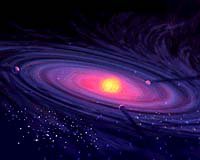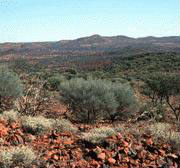Exploring Planet-Forming and Debris Disks

When: June 20, 2005 1PM PDT


Understanding the formation and evolution of life in the galaxy requires an
understanding of the birth and evolution of planetary systems. The planets
of our solar system formed in a circumstellar disk, and such disks have been
observed around both young and evolved stars. We will present an overview of
several observational projects to explore the properties of such
circumstellar disks, including infrared photometry, disk imaging and
spectroscopy. We report on studies of disks around objects with masses
ranging from substellar to a few solar masses, investigating their structure
and mineralogical composition.
 A Record of the Earliest (4.5-3.8 Ga) Surface Conditions on Earth?
A Record of the Earliest (4.5-3.8 Ga) Surface Conditions on Earth? Simulating Groundwater Radiolysis With Oxidation of Pyrite by Hydrogen Peroxide Solution
Simulating Groundwater Radiolysis With Oxidation of Pyrite by Hydrogen Peroxide Solution Quantifying Water Production in Comets - The "Meter Stick" for Their Chemical Taxonomy
Quantifying Water Production in Comets - The "Meter Stick" for Their Chemical Taxonomy Remote Sensing of Life and Habitable Worlds: Habstars, Earthshine, and the Challenge of TPF
Remote Sensing of Life and Habitable Worlds: Habstars, Earthshine, and the Challenge of TPF